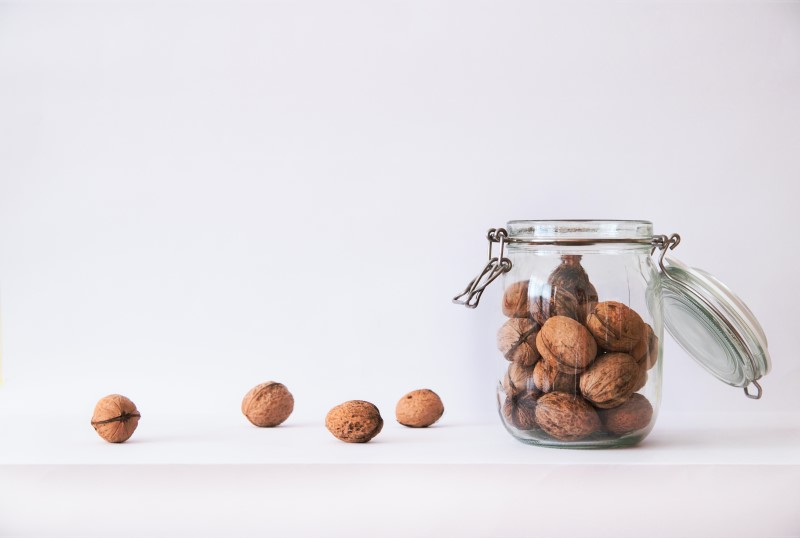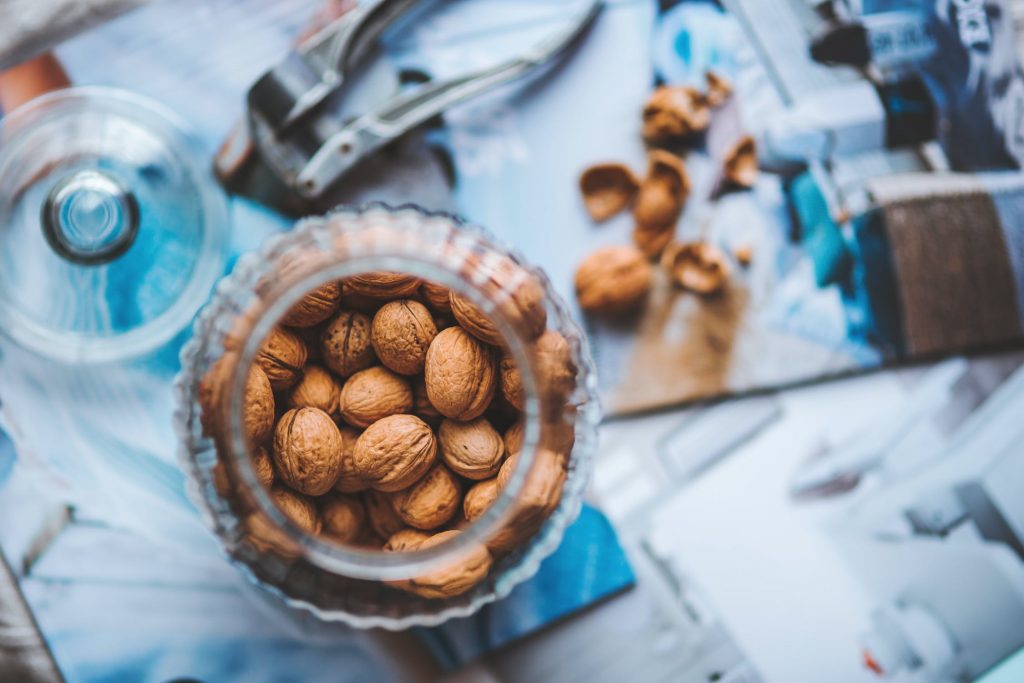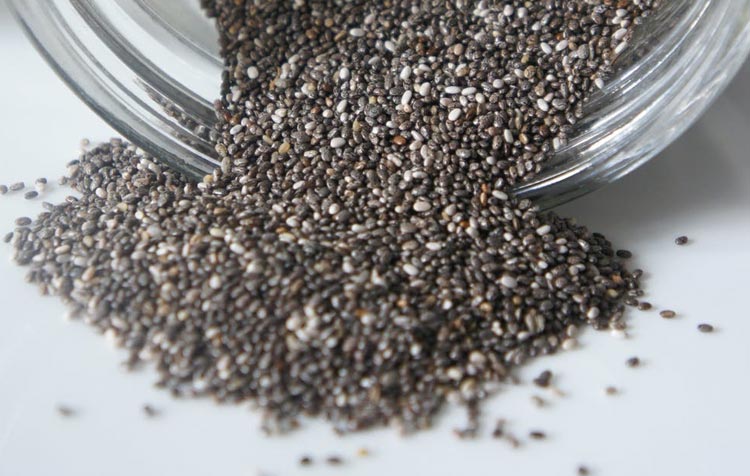Want to learn more about omega 3 fatty acids? Then this is the right article for you. I will tell you everything you need to know about the long-chain omega-3 fats and their subtypes. We start with a fact sheet about the omega 3 fatty acids and then we continue with intake, daily requirement, importance, overdose, deficiency, test variants and ways to meet the daily needs. In addition, you will find special information for vegans and vegetarians and what forms of supplements can be useful.
Here is in advance a short Overview for you:
Notice: This article is not a substitute for medical advice, but only provides general information about omega-3 fatty acids. Please consult your doctor if you feel unwell or want to prevent health problems with medical care.
Omega 3 PROFILE at a glance
Assignment: unsaturated fats
Synonyms: n-3 fatty acids
Important for: Component of the cell membrane, development of the retina and brain in the growth phase, inflammatory processes
Daily requirement: ALA: 0.5 % of total calories1, EPA/DHA 250-1,000 mg2,3,4
Recording: through food intake or dietary supplements
Overdose: by extremely high doses of fish or algae oil
Deficiency symptoms: e.g. muscle weakness, concentration, sleep, and growth disorders
Food: Fish, flaxseed, walnuts, chia seeds, microalgae oil
Nutritional supplement: As drops or capsules
How to take omega 3?

Omega-3 fatty acids, also known as n-3 fatty acids, are especially known to protect the heart from cardiovascular disease, as they increase the Improve blood lipid levels.5 They occur in different forms namely alpha-linolenic acid (ALA), eicosapentaenoic acid (EPA), docosahexaenoic acid (DHA) and docosapentaenoic acid (DPA).
Under certain conditions, the human body is able to convert ALA to EPA and EPA to DHA, as well as to convert DHA back to EPA. Conversion of DPA to DHA is still under discussion.6
A supply of ALA can be sufficient under optimal conditions to also cover the need for EPA and DHA. However, this depends on the conversion rate of the body, which in turn depends strongly on the ratio between omega-3 and omega-6 fatty acids, since, for example, linoleic acid (LA), which belongs to the omega-6 fatty acids, has an inhibitory effect on the conversion of ALA to EPA. A good ratio is lower than 5:1 (omega 6 : omega 3).
Omega-3 fatty acids in the forms EPA and DHA are mainly found in Fish while ALA can be found in many plant sources, such as Nuts and seeds occurs. In a vegan diet, it is therefore good that the body is able to convert the ALA into EPA and the EPA into DHA with an appropriate ratio between omega-3 and omega-6 fatty acids. However, to be on the safe side. Food supplements be useful. More about this later.
What is the daily requirement of omega-3 fatty acids?
Now it gets exciting. How much omega 3 do you actually need per day? You already know the different forms of the unsaturated fatty acid. There is a recommended intake for all of them. There is some range in recommendations for omega-3 fatty acids. Basically, the reference values are never to be understood as a holy grail, so that one immediately becomes ill or drops dead if one does not meet the values. They are always dependent on the individual, his metabolism, body weight and constitution.
This daily requirement is recommended
The German Nutrition Society (DGE) recommends an intake of 0.5 % of total calories for ALA.1 With a calorie intake of 2,000 kcal, this is then approx. 1 g ALA. For EPA and DHA, the DGE recommends an intake of 250-500 mg per day, best in the Ratio 1:2 (EPA:DHA).2 This value is based primarily on studies that found a reduction of 36 % in the risk of dying from coronary heart disease with an intake of 250 mg EPA and DHA per day.7 However, since omega-3 fatty acids are needed for more than heart health, I think a higher dosage makes sense.
Higher recommendations for omega-3 intake can be found in the Journal of the Academy of Nutrition and Dietetics, which recommends an ALA content of 0.6-1.2 % of total calories and a minimum intake of 500 mg total EPA and DHA per day.3 It makes sense to make sure that the DHA portion of the 500 mg is higher than the EPA portion, since the body can relatively easily convert the DHA to EPA when needed.
A study investigating the prevention of cardiovascular disease was published in the journal Nutrients. In this, a total daily intake of 1,000 mg EPA and DHA per day is described as usual and safe.4
Daily omega-3 intake: The official reference values vary from 250-1,000 mg EPA and DHA per day. Personally, I tend to orient myself towards the upper end of the scale.
What is the function of omega-3 fatty acids in the human body?
Omega-3 fatty acids are involved in many processes in the body. Above all, they are known for their ability to stimulate the Improve blood lipid levels and so to the Heart health contribute. Furthermore, they are also used in cell metabolism for the Structure of the cell membrane needed. The healthy fatty acids act anti-inflammatory and can thus prevent the formation of chronic inflammation. In addition, the unsaturated fatty acids are used for the Formation of the body's own defense cells and to the Protection against infectious diseases needed.8
Here again functions of Omega 3 at a glance:
- Optimizes blood lipid levels and heart health
- Structure of the cell membrane
- Anti-inflammatory
- Formation of defense cells
- Protection against infectious diseases
Is n-3 overdose possible?
According to the European Food Safety Authority (EFSA), there are No official Tolerable Upper Intake Level (UL)because the data situation for this is insufficient so far. Due to the insufficient data, EFSA has investigated the intake of 2-6 g EPA and DHA and 2-4 g DHA, respectively. As a result, an increase in LDL cholesterol of 3 % was found, but this is not thought to have any adverse health effects. EFSA concludes that an intake of a total of 5 g EPA and DHA daily is harmless to health is.9
When does an omega-3 deficiency occur?
A deficiency of the important long-chain omega-3 fatty acids can affect not only vegans and vegetarians, but also meat lovers. The healthy fatty acids come mainly from flaxseed, walnuts, chia seeds (ALA), as well as microalgae and fatty fish (EPA and DHA). A diet that contains only a few seeds and nuts, as well as little fish or algae containing n-3, can quickly lead to an undersupply.
This deficiency can be demonstrated, among other things, by the following Symptoms express:
- Muscle weakness
- Concentration disorders
- Sleep disorders
- Growth disorders
- Increased risk of cardiovascular disease
What tests can determine omega-3 status?
For the analytics of the omega-3 status the HS Omega-3 Index is used. This measures the fatty acid distribution in the blood and can determine whether your body has enough EPA and DHA available.
What foods are rich in the unsaturated fatty acid?

As already mentioned, the omega-3 supply depends not only on the appropriate content of a food, but above all on the ratio between omega 3 and omega 6.
For ethical, ecological and health reasons, I generally recommend a plant-based dietNevertheless, I would like to inform as comprehensively as possible about the unsaturated fatty acid and therefore list here some animal foods that are rich in the unsaturated fatty acid and have an good ratio between n-3 and n-6 fatty acids have
- Chia seeds ( 20,470 mg ALA per 100 gram)
- Flaxseed (17,000 mg ALA per 100 gram)
- Walnuts (7,830 mg ALA per 100 gram)
- hulled hemp seeds (7,300 mg ALA per 100 gram)
- Herring (796 mg EPA, 1242 DHA per 100 gram)
- Sardine (747 mg EPA, 1337 DHA per 100 gram)
However, I do not consider the frequently recommended linseed oil to be a good source, as it oxidizes very quickly.
What do vegans and vegetarians have to consider when it comes to omega-3 supply?
The DGE defines the n-3 in vegans and vegetarians as a potentially critical nutrientThis is due to the fact that EPA and DHA are mainly absorbed through fish.10 Regular dietary supplementation, as well as a review of the n-3 status, can therefore be useful. However, it is perfectly possible to meet your omega-3 needs with a balanced and well-planned plant-based diet. In order for your body to optimally convert ALA into EPA, you should regularly include the nuts and seeds mentioned above in your diet and rely on Avoid foods with too much omega-6 fatty acids.
Foods high in omega-6 fatty acids or with a poor ratio of O3 to O6 include sunflower seeds and oil, hazelnuts, poppy seeds and almonds, and pumpkin seed and safflower oil. To avoid sunflower oil, I recommend the use of rapeseed oil, which has an n-6 to n-3 ratio of 2:1, or olive oil, which has an n-6 to n-3 ratio of 9:1. For salads, hemp oil (3:1) or walnut oil (4:1) are also good options.
However, I personally find it quite exhausting to always pay exact attention to the n-6 to n-3 ratio and don't want to have to make an overly exact science out of my diet. Therefore I find it useful a food supplement with EPA and DHA based on microalgae to use.
Finding the right omega-3 supplement
Food supplement with omega-3 fatty acids mostly consist of either fish oil or microalgae oil. Since fish absorb the omega 3 via microalgae, you can also save the intermediate step "fish" and directly use microalgae oil. In addition, microalgae can be cultivated in laboratories and thus contain fewer impurities and can be produced more ecologically.
If you want to take a supplement, it can be useful to take the Coordinate nutritional supplementation with your primary care physicianin order to avoid overdosing. If a supplement is useful, then the following preparations in drop or capsule form are recommended:
- Drop from Vivo Life (600 mg DHA, 300 mg EPA per daily dose):
you get here* - Capsules from Mind Body Nutrition (500 mg DHA, 250 mg EPA per daily dose):
you get here*
Vivo Life microalgae oil has a dosage of 600 mg DHA and 300 mg EPA and is thus slightly above the reference values of the DGE1but within the reference values from other studies.3,4,9 Since I personally consider the DGE reference values for EPA and DHA to be somewhat too low, I can recommend the dosage of the Vivo Life supplement.
Ensure omega-3 supply permanently
Your n-3 supply depends mainly on the n-3 to n-6 ratio of your foods. If you regularly include foods with a good ratio in your diet and avoid foods with a poor ratio, you will optimize the body's conversion of ALA to EPA and thus your n-3 supply.
I personally consider a Supplementation of omega-3 fatty acids, however both in a plant-based diet and in a mixed diet for useful. If you then still balanced diet, exercise regularly, and spend time in the fresh air, you can be more successful through your healthy lifestyle already many deficiency symptoms and Avoid diseases.
Should you feel unwell on a regular basis or have made major changes to your diet, a Blood test with your family doctor to detect a potential deficiency at an early stage.
If you have any questions or suggestions about the post on Omega 3, feel free to drop me a comment!
All the best,

PS.: You want to know, why we live vegan? In the linked article you will learn our motives! Or do you want to learn more about nutrients? Then take a look at the next article about Vitamin D. Have fun!
References:
1 German Nutrition Society: Fat, https://www.dge.de/wissenschaft/referenzwerte/fett/?L=0 [22.06.2021].
2 Deutsche Gesellschaft für Ernährung e. V.: Evidence-based guideline Fat intake and prevention of selected diet-related diseases, https://www.dge.de/fileadmin/public/doc/ws/ll-fett/v2/Gesamt-DGE-Leitlinie-Fett-2015.pdf. [22.06.2021].
3 G. Vannice, H. Rasmussen (2014). Position of the Academy of Nutrition and Dietetics: Dietary Fatty Acids for Healthy Adults. In Journal of the Academy of Nutrition and Dietetics 114 (1), pp. 136-153, available online: https://jandonline.org/article/S2212-2672(13)01672-9/fulltext. [22.06.2021]
4 S. Eilat-Adar, T. Sinai, C. Yosefy & Y. Henkin (2013). Nutritional recommendations for cardiovascular disease prevention. In Nutrients 5 (9), pp. 3649-3683, available online: https://www.mdpi.com/2072-6643/5/9/3646/htm. [22.06.2021]
5 Zentrum der Gesundheit: Proper dosage of omega-3 fatty acids,
https://www.zentrum-der-gesundheit.de/ernaehrung/nahrungsergaenzung/omega-3-uebersicht/omega-3-richtig-dosieren. [22.06.2021].
6 K. Wehrmüller, A. Schmid, Dr. B. Walther (2008). Health benefits of omega-3 fatty acids and the importance of alpine products for intake. In: Ernährungsumschau 55 (2008), pp. 655-661, available online: https://www.ernaehrungs-umschau.de/fileadmin/Ernaehrungs-Umschau/pdfs/pdf_2008/11_08/EU11_655_661.qxd.pdf. [22.06.2021].
7 D. Mozaffarian, T. Hao, E. B: Rimm, et al. (2011). Changes in diet and lifestyle and long-term weight gain in women and men. In: The New England Journal of Medicine 364 (2011), pp. 2392-2404, Available online: https://www.nejm.org/doi/pdf/10.1056/NEJMoa1014296. [22.06.2021].
8 Zentrum der Gesundheit: Omega-3: The effects of fatty acids,
https://www.zentrum-der-gesundheit.de/ernaehrung/nahrungsergaenzung/omega-3-uebersicht/omega-3-fettsaeuren. [22.06.2021].
9 European Food Safety Authority (2012). Scientific Opinion on the Tolerable Upper Intake Level of eicosapentaenoic acid (EPA), docosahexaenoic acid (DHA) and docosapentaenoic acid (DPA), https://efsa.onlinelibrary.wiley.com/doi/epdf/10.2903/j.efsa.2012.2815. [22.06.2021].
10 Deutsche Gesellschaft für Ernährung e. V.: Supplement to the position of the German Nutrition Society regarding population groups with special nutritional needs, https://www.dge.de/wissenschaft/weitere-publikationen/dge-position/vegane-ernaehrung/?L=0, [22.06.2021].





